Gorogoa offers a unique puzzle experience through its hand-drawn art, emotional depth, and innovative narrative integration. The intricate visuals enhance storytelling, while the puzzle design challenges players’ critical thinking. This article explores Gorogoa’s artistic approach, the seamless connection between gameplay and narrative, and the complexities of its puzzle mechanics. Discover how these elements create an immersive experience that stands out in the puzzle genre.
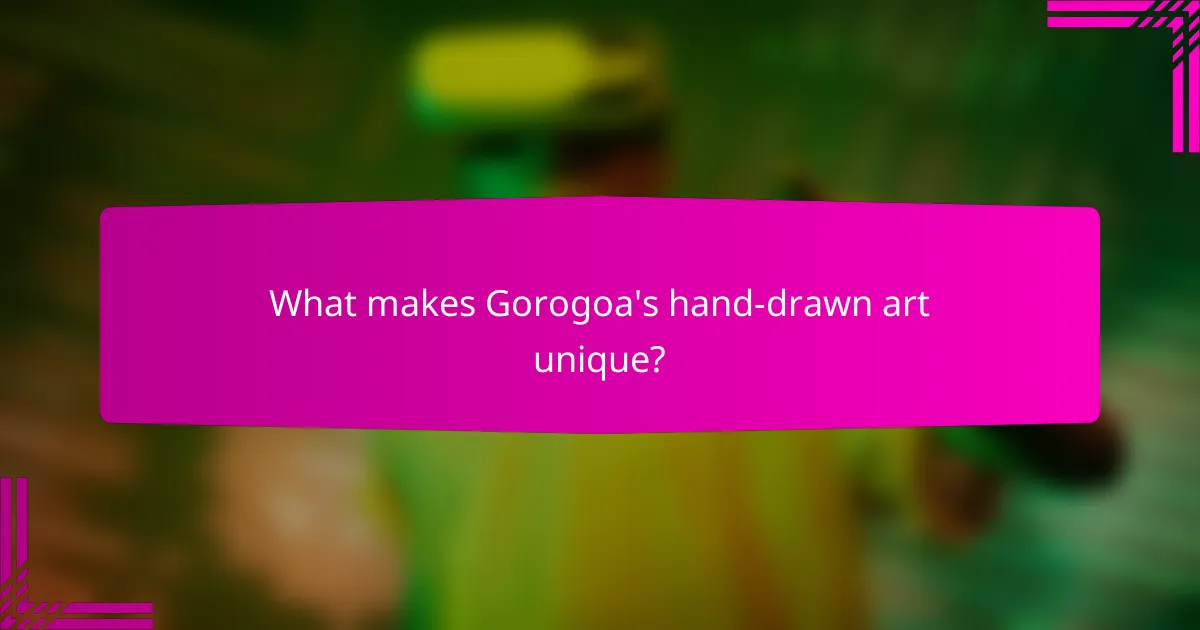
What makes Gorogoa’s hand-drawn art unique?
Gorogoa’s hand-drawn art is unique due to its intricate detail, emotional depth, and seamless narrative integration. The artwork features a blend of vibrant colours and delicate lines, creating a visually captivating experience. Each illustration is meticulously crafted, enhancing the storytelling aspect of the game. The puzzle design leverages the art’s uniqueness, allowing players to interact with the visuals in innovative ways. This combination of artistry and gameplay sets Gorogoa apart in the realm of interactive storytelling.
How does the artistic style enhance the overall experience?
The artistic style of Gorogoa significantly enhances the overall experience by creating an immersive narrative and engaging puzzle design. The hand-drawn art captivates players, drawing them into a visually rich world. Each illustration serves as a unique puzzle piece, reinforcing the narrative’s emotional depth. This integration of art and gameplay fosters a seamless connection between the player’s actions and the story progression, making each moment feel purposeful. Overall, the artistic style elevates the gaming experience by blending aesthetics with interactive storytelling.
Which techniques were used in the creation of the visuals?
Gorogoa employs hand-drawn art, narrative integration, and innovative puzzle design techniques. The visuals are created using meticulously crafted illustrations that enhance storytelling. Each scene connects seamlessly, allowing players to interact with the narrative through visual elements. The puzzles are designed to challenge players while maintaining engagement with the art style.
What are the emotional impacts of the artwork on players?
The artwork in Gorogoa evokes strong emotional responses in players through its intricate hand-drawn visuals and narrative depth. Players often experience feelings of wonder and curiosity as they engage with the beautifully crafted scenes. The integration of art and puzzle design creates moments of reflection, leading to a sense of accomplishment upon solving challenges. Unique visual storytelling enhances emotional engagement, making players feel connected to the narrative journey.
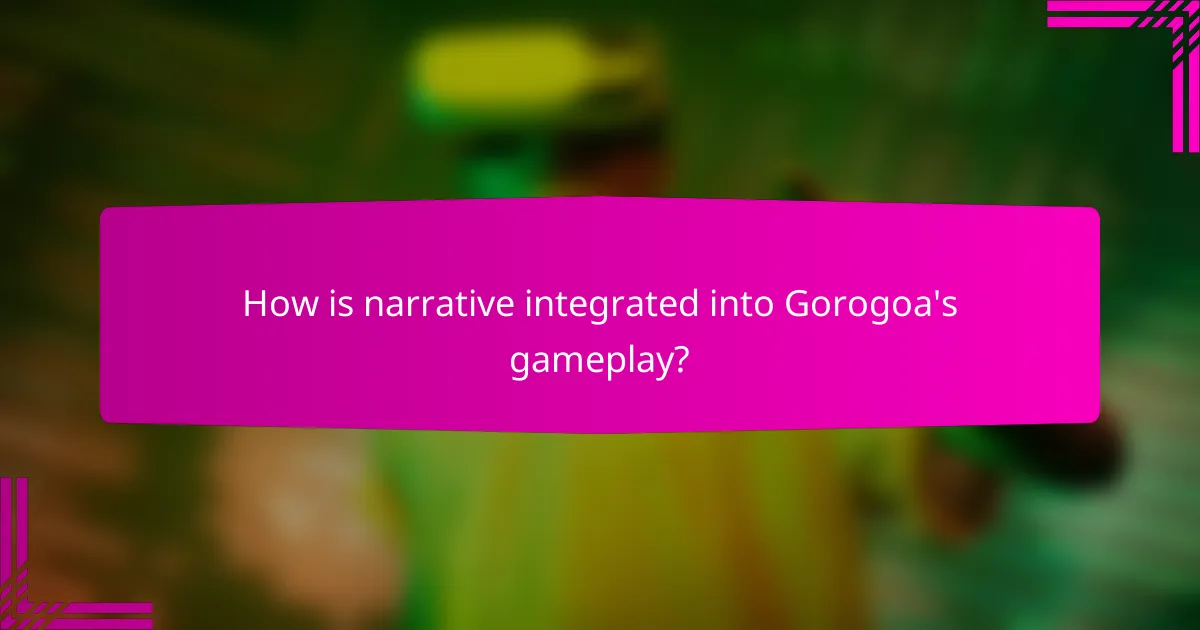
How is narrative integrated into Gorogoa’s gameplay?
Gorogoa integrates narrative through visual storytelling and puzzle mechanics. Each puzzle piece represents a moment in the story, encouraging players to explore themes of memory and perception. The hand-drawn art enhances emotional engagement, creating a seamless connection between gameplay and narrative. As players manipulate images, they uncover layers of meaning, making the experience deeply immersive. This unique attribute of Gorogoa’s design allows players to piece together a cohesive narrative through interaction rather than dialogue.
What storytelling methods are employed throughout the game?
Gorogoa employs visual storytelling, interactive puzzles, and layered narratives to engage players. The hand-drawn art enhances emotional depth, while the integration of narrative and gameplay creates a cohesive experience. Each puzzle unfolds a part of the story, encouraging exploration and interpretation. Unique transitions between scenes reinforce the connection between art and narrative, making the storytelling immersive and impactful.
How do visual elements contribute to narrative progression?
Visual elements significantly enhance narrative progression in “Gorogoa” by seamlessly integrating art and storytelling. The hand-drawn visuals create immersive environments that guide players through emotional arcs. Each illustration serves as a narrative device, revealing plot details and character development. This unique approach allows players to engage with the story visually, making connections that deepen their understanding and emotional investment. The puzzle design further complements this integration, as solving visual challenges progresses the narrative, reinforcing the relationship between gameplay and storytelling.
Which themes are explored through the game’s story?
Gorogoa explores themes of memory, perception, and the passage of time. The narrative intertwines these concepts through hand-drawn art and innovative puzzle design. Each level reflects the protagonist’s journey, revealing personal growth and emotional depth. The integration of visual storytelling enhances the player’s engagement with these themes.
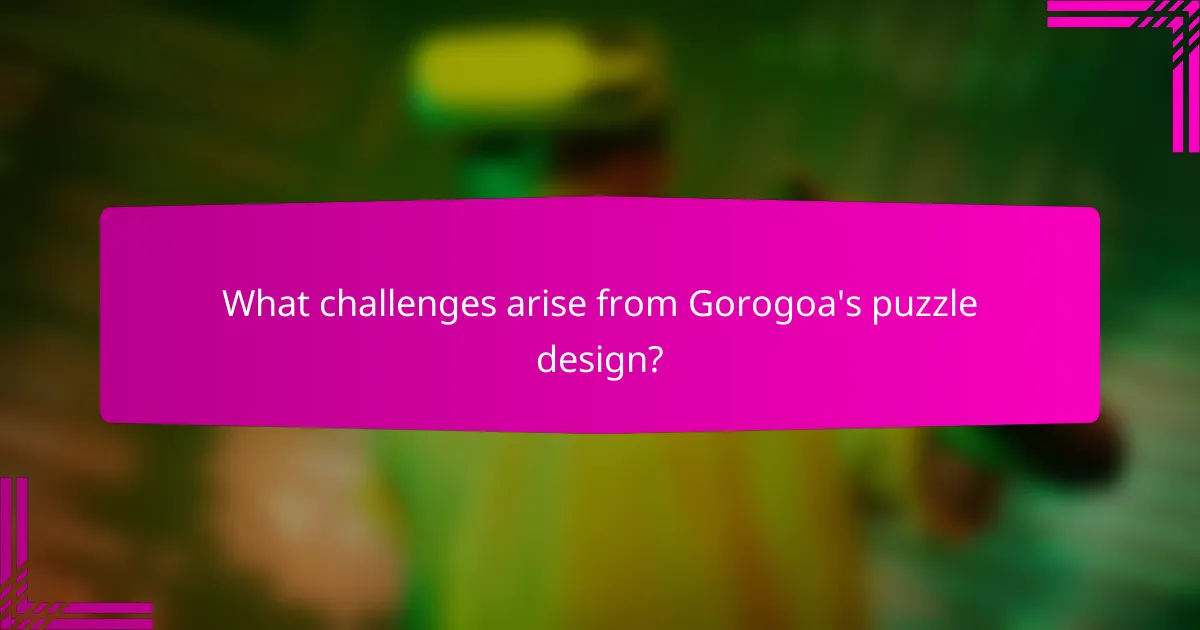
What challenges arise from Gorogoa’s puzzle design?
Gorogoa’s puzzle design presents challenges such as complexity, visual interpretation, and narrative coherence. Players may struggle with the intricate layering of images, which can obscure the intended solutions. The reliance on hand-drawn art creates a unique aesthetic but may lead to misinterpretations of clues. Additionally, balancing narrative integration with puzzle mechanics can disrupt the flow, causing frustration. These factors contribute to a demanding yet rewarding gameplay experience.
How do puzzles interact with narrative elements?
Puzzles in Gorogoa enhance narrative by requiring players to connect images and story elements. This interaction creates a seamless blend of gameplay and storytelling. Each puzzle piece represents a moment in the narrative, allowing players to explore themes and emotions through visual and interactive means. The hand-drawn art style further deepens immersion, making each solved puzzle feel like a progression in the story. This integration fosters a unique experience where the narrative unfolds as players engage with the puzzles, emphasizing the relationship between gameplay and storytelling.
What are the cognitive demands placed on players?
Gorogoa places significant cognitive demands on players through its intricate puzzle design and narrative integration. Players must engage in spatial reasoning, pattern recognition, and critical thinking to manipulate hand-drawn panels effectively. The game’s unique attribute lies in its seamless blend of storytelling and puzzle mechanics, requiring players to interpret visual cues and make connections between disparate elements. As a result, the cognitive load can vary based on the complexity of the puzzles, enhancing the overall immersive experience.
Which design choices create a balanced difficulty curve?
Balanced difficulty in Gorogoa arises from intuitive puzzle design, progressive challenge, and narrative integration. Each puzzle builds on previous knowledge, ensuring players engage without frustration. The hand-drawn art enhances immersion, while visual cues guide problem-solving. This combination maintains player interest and promotes a rewarding experience.
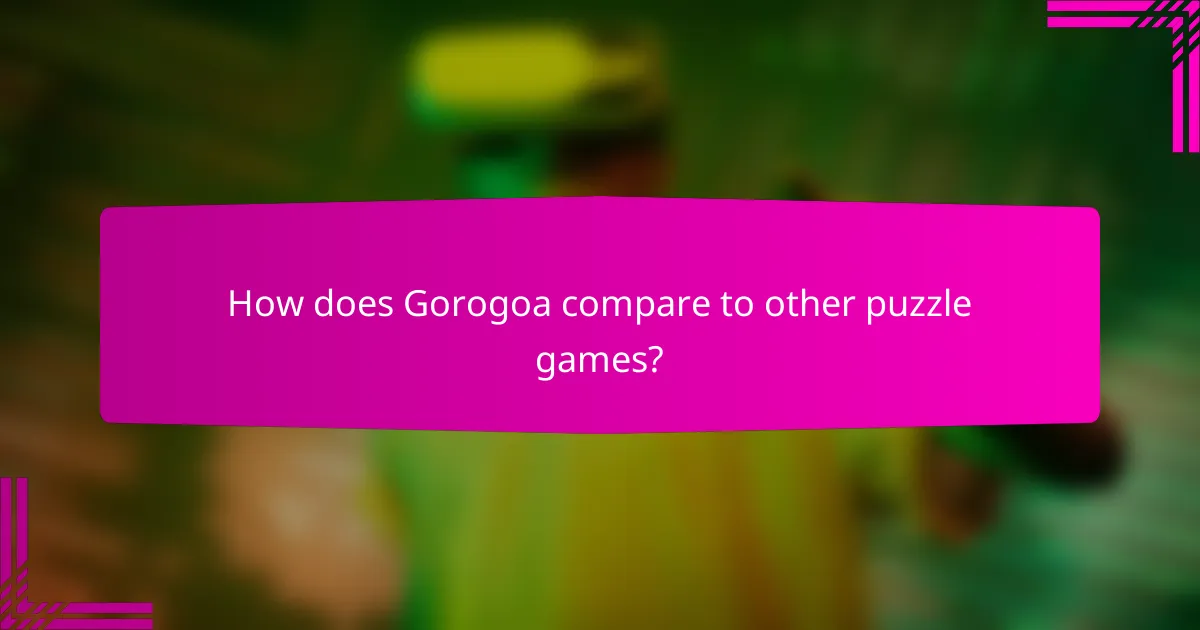
How does Gorogoa compare to other puzzle games?
Gorogoa stands out among puzzle games due to its unique hand-drawn art, narrative integration, and innovative puzzle design. Unlike traditional puzzle games, Gorogoa utilises a visual storytelling approach where players manipulate illustrated panels to solve challenges.
The game emphasises creativity and exploration, setting it apart from others that rely on standard mechanics. Its hand-drawn aesthetic enhances immersion, making each puzzle feel like a piece of art. The seamless integration of narrative and gameplay creates a cohesive experience, unlike many puzzle games that separate story from mechanics.
In comparison, titles like The Witness focus on environmental puzzles without a strong narrative thread, while games like Portal prioritise humour and physics-based challenges. Gorogoa’s distinct blend of art and storytelling offers a refreshing alternative in the puzzle genre.
What sets Gorogoa apart in terms of player engagement?
Gorogoa engages players through its unique hand-drawn art, seamless narrative integration, and innovative puzzle design. The visual storytelling captivates players, making them feel part of the artwork. Each puzzle requires critical thinking and creativity, enhancing immersion. The game’s design encourages exploration, rewarding players with a sense of accomplishment as they progress through its intricately crafted levels.
Which aspects of gameplay are more innovative than competitors?
Gorogoa features innovative gameplay through its hand-drawn art, unique narrative integration, and intricate puzzle design. The visual storytelling captivates players, creating an immersive experience. The seamless merging of narrative and gameplay distinguishes it from competitors, enhancing engagement. Additionally, the puzzle mechanics encourage creative thinking and exploration, setting a new standard in puzzle design.
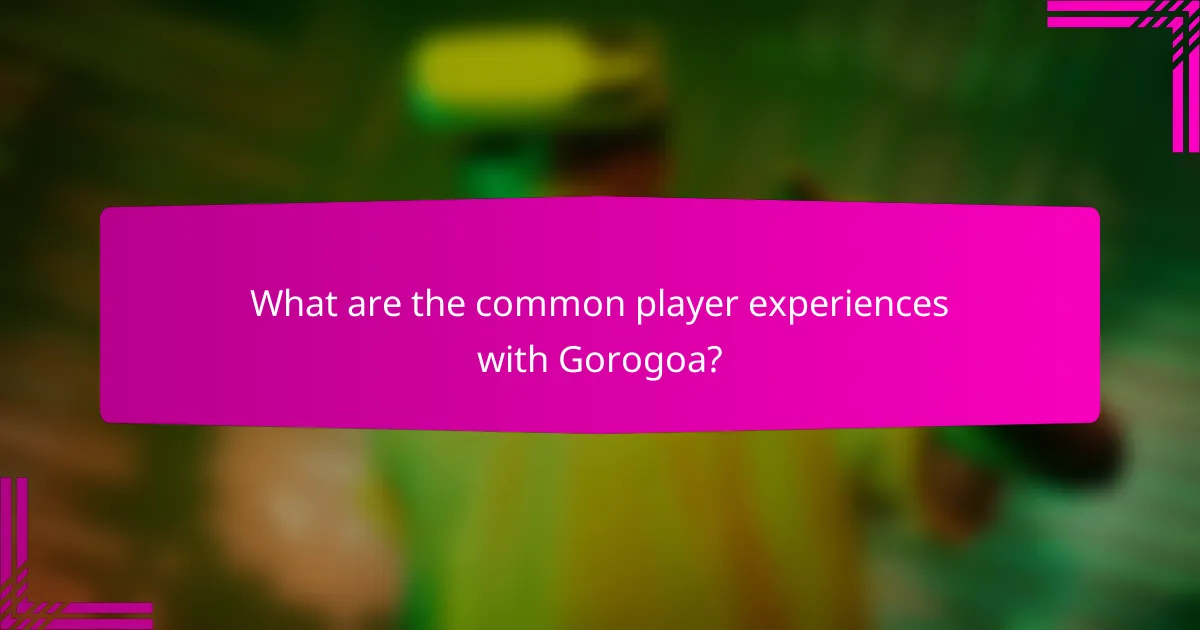
What are the common player experiences with Gorogoa?
Players commonly experience immersive storytelling, intricate puzzles, and stunning hand-drawn art in Gorogoa. The narrative unfolds through visual interactions, creating a unique gameplay experience. Players often express admiration for the seamless integration of art and mechanics, enhancing emotional engagement. The puzzle design challenges critical thinking while maintaining accessibility, appealing to a broad audience. Overall, Gorogoa delivers a distinctive blend of creativity and gameplay that resonates with players.
How do players typically respond to the puzzles?
Players typically respond positively to the puzzles in Gorogoa, finding them engaging and thought-provoking. The hand-drawn art enhances the immersive experience, while the narrative integration deepens emotional connections. Players appreciate the unique attribute of visual storytelling, which requires them to think creatively. Many express satisfaction with the challenge level, as it balances difficulty and accessibility, offering a rewarding sense of achievement upon solving.
What feedback have players provided regarding the narrative?
Players have praised Gorogoa’s narrative for its unique integration with hand-drawn art and puzzle design. Feedback highlights the emotional depth and storytelling innovation, creating a compelling experience. Many appreciate how the visual elements enhance narrative progression, making puzzles feel meaningful. The game’s ability to convey complex themes through minimalist storytelling has resonated with players, setting it apart in the puzzle genre.

What are the best strategies for completing Gorogoa?
To complete Gorogoa effectively, players should focus on visual storytelling, spatial awareness, and puzzle integration. Observing details in hand-drawn art enhances understanding of narrative connections.
1. Explore every layer: Interact with all elements to uncover hidden pathways and connections.
2. Think outside the box: Use unconventional methods to manipulate images and create new narratives.
3. Pay attention to transitions: Recognise how scenes shift and interact to solve puzzles seamlessly.
4. Embrace trial and error: Experiment with different combinations to discover unique solutions.
How can players effectively approach challenging puzzles?
Players can effectively approach challenging puzzles in Gorogoa by focusing on observation, experimentation, and narrative context. First, analyse the hand-drawn art for clues that connect the visuals to the puzzle mechanics. Second, interact with the puzzle elements to discover how they can be manipulated or combined. Lastly, pay attention to the narrative integration, as the story often provides hints or thematic connections that guide puzzle-solving. This approach leverages the unique attributes of Gorogoa’s design, enhancing the overall gaming experience.
What tips can enhance the overall gameplay experience?
To enhance the overall gameplay experience in Gorogoa, focus on the following tips:
1. Engage deeply with the hand-drawn art, appreciating the intricate details that contribute to the narrative.
2. Experiment with different puzzle-solving approaches to discover unique solutions and enhance creativity.
3. Take your time to explore each scene, as the integration of narrative and visuals unfolds gradually.
4. Utilise hints sparingly to maintain the challenge and satisfaction of solving puzzles independently.
Which mistakes should players avoid while playing?
Players should avoid common mistakes to enhance their experience in Gorogoa. Key errors include overlooking details in the hand-drawn art, failing to connect narrative elements with puzzle design, and rushing through levels without fully engaging with the story.
Another mistake is not experimenting with different interactions, which can lead to missed solutions. Players should also avoid neglecting the significance of each visual cue, as they often provide hints for puzzle-solving. Finally, being impatient can hinder enjoyment; taking time to appreciate the artistry and narrative integration is essential for a fulfilling gameplay experience.
